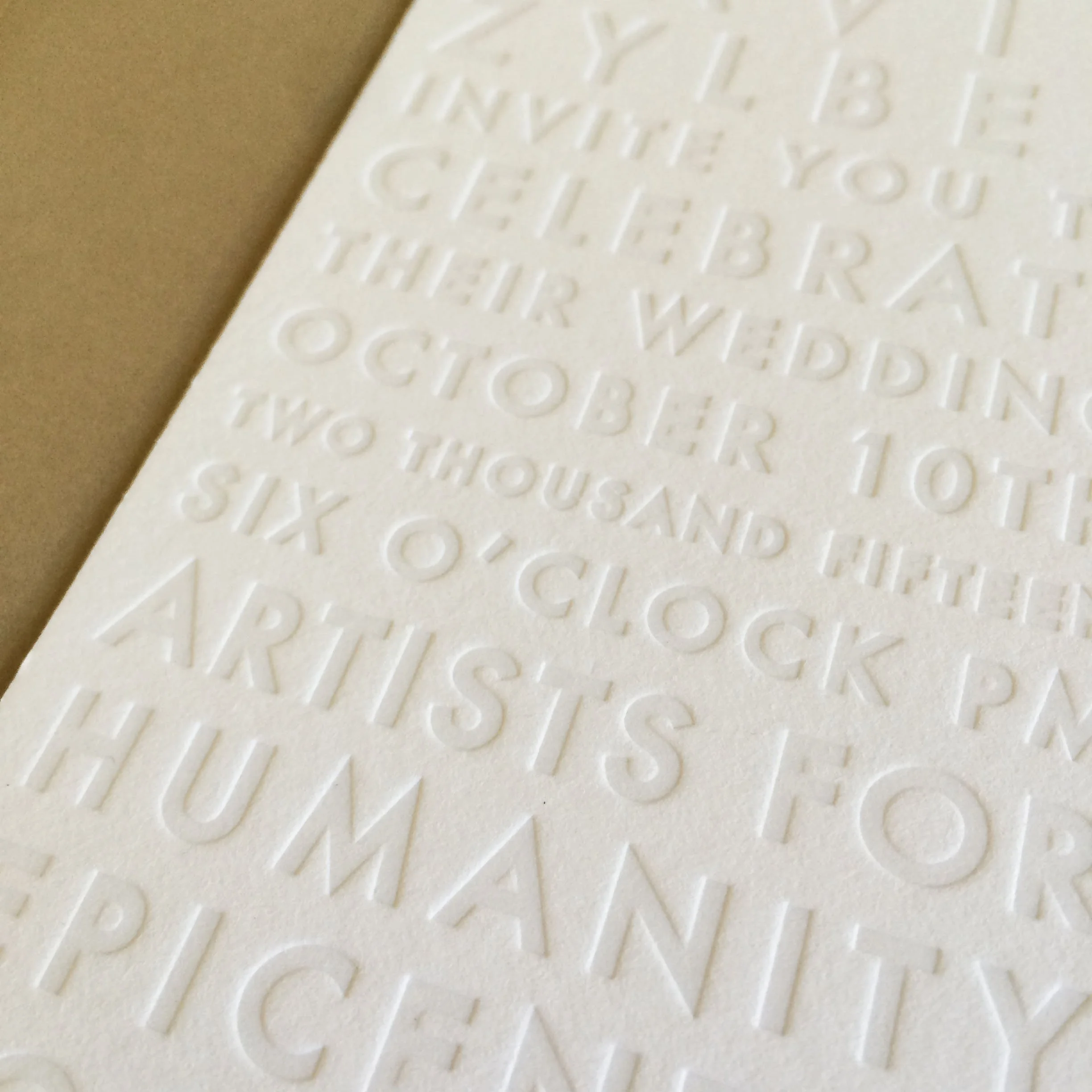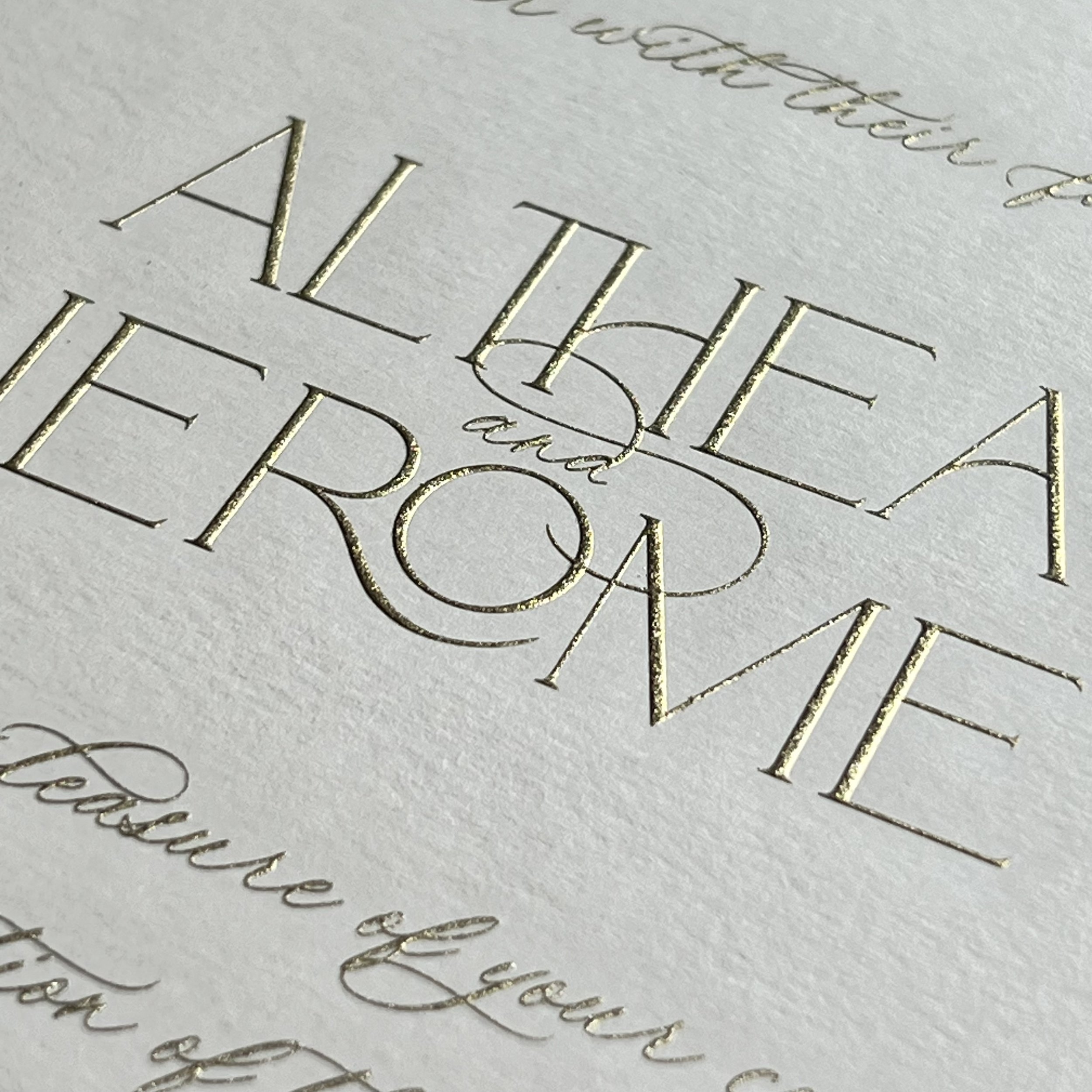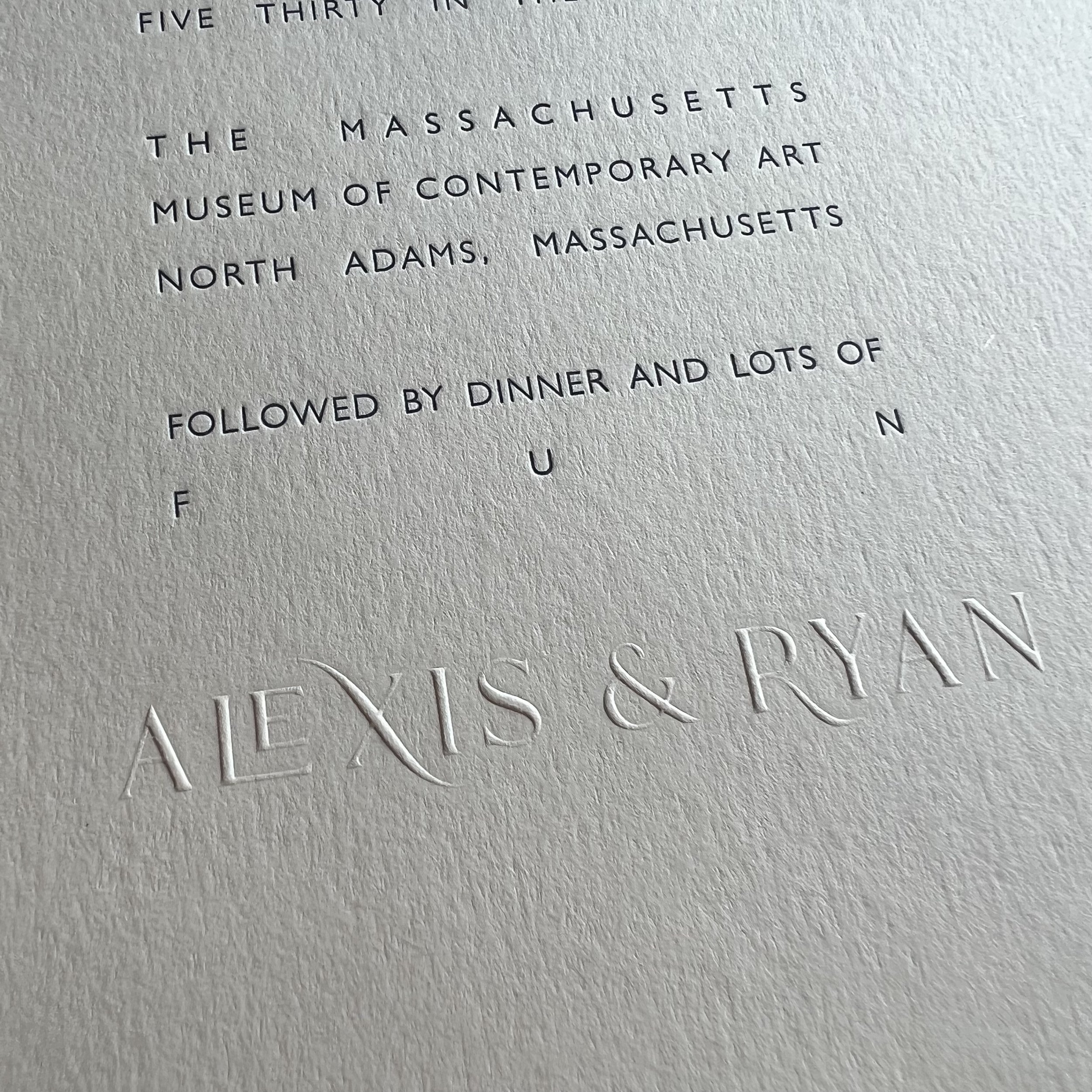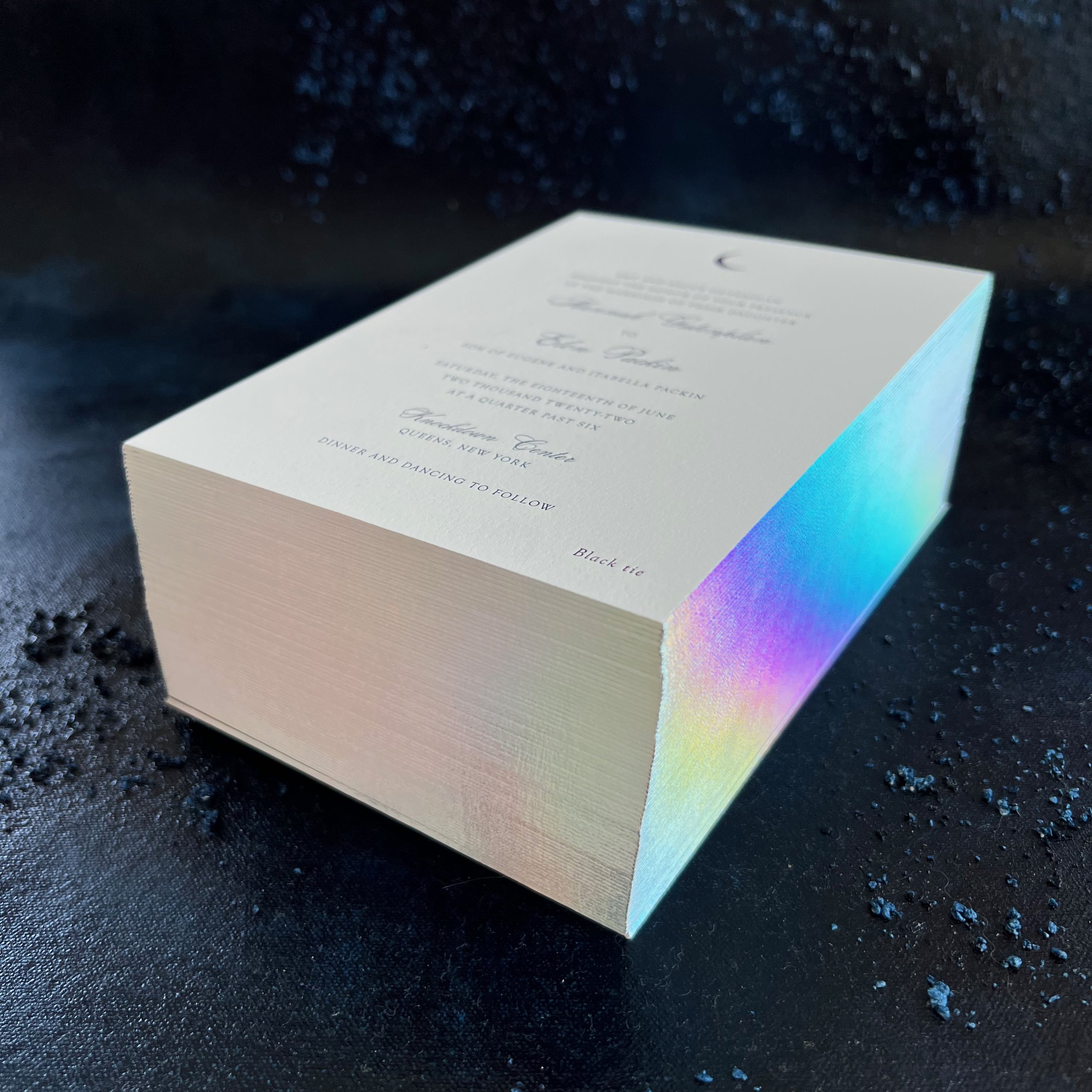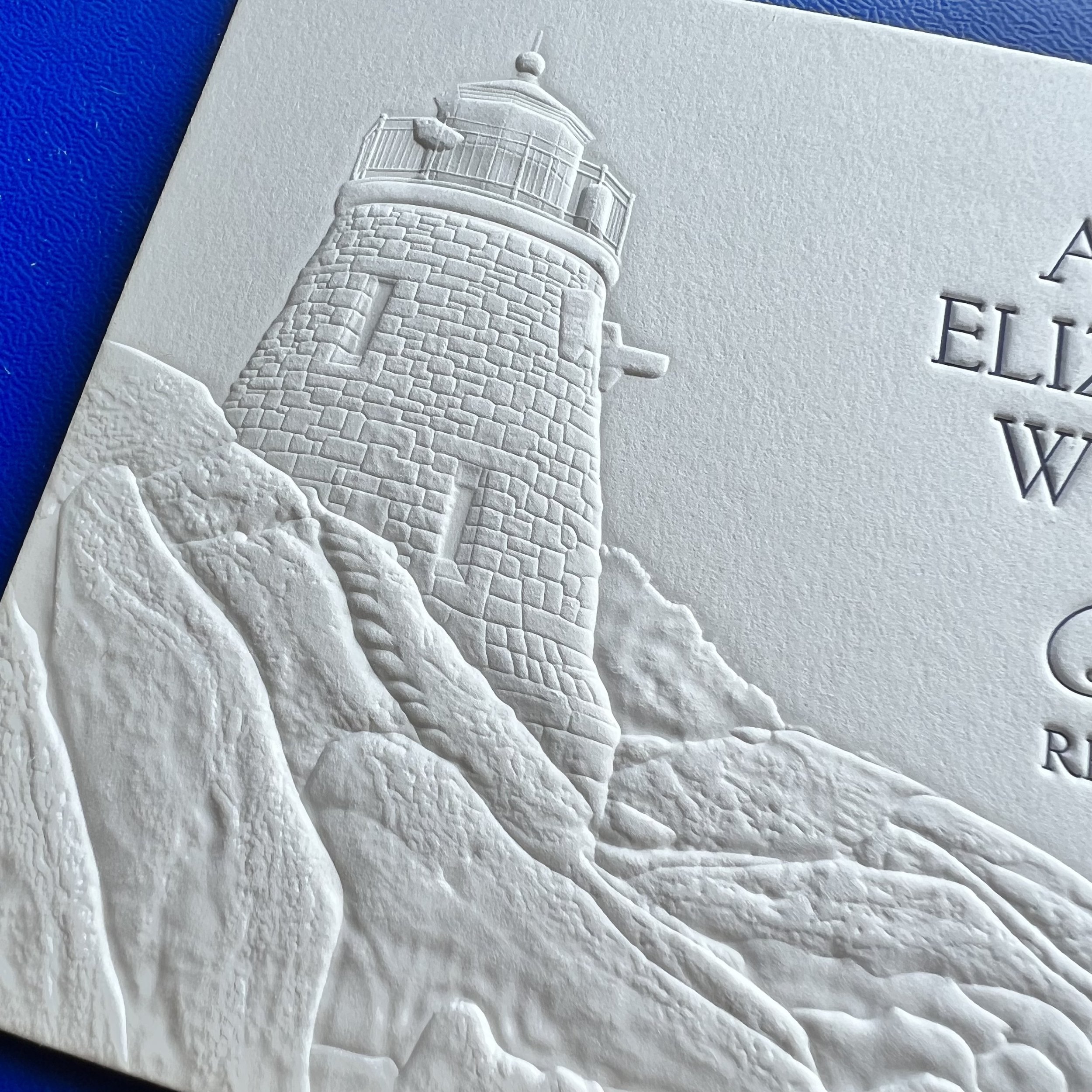ARTISAN PRINTING TECHNIQUES
What is the difference between Letterpress printing, Foil printing, and Engraving? How is Debossing different from Embossing? And, also, what’s the deal with edges?
In this post we will break down and explain the different printing techniques you may encounter when considering stationery for your wedding or event. Robison Press just so happens to offer ALL OF THEM.
A bespoke printing project isn’t an everyday endeavor for most, and for that reason it can feel a bit overwhelming to understand all of the moving parts - especially if your first foray to artisan printing happens to be in conjunction with planning a wedding that’s already got your brain running in 75 different directions at once. We get it, and we want to help, read on.
Letterpress
Letterpress printing is created by pressing oil based printing ink into paper with a positive polymer plastic or metal printing plate, the image or text will leave a depression on the surface of the paper when enough pressure is applied in the printing process. AKA, the printed image and text will be debossed.
Letterpress Best Practices
Each color of letterpress ink is applied in a separate run through an antique press, so the more ink colors you want to see on your finished piece, the more labor intensive the printing process is. We recommend using 2 colors to keep costs down, but up to 4 if you’re totally obsessed like we are.
Letterpress printing looks beautiful on cotton paper stocks {the thicker the better, if you ask us} so that you can really see that crisp impression.
Ironically, in the early days of printing, it was considered “bad printing” if your print debossed the paper, but now it’s a sign of fine printing.
Blind Letterpress |
Inkless Impression |
Debossing
Blind letterpress, or debossing, is the same printing process as letterpress, but no ink is applied to the positive polymer printing plate, so the image or text will leave a colorless depression, or deboss, on the surface of the paper.
Blind Letterpress best practices
The thicker the paper, the more noticeable and deep the impression can be.
Sometimes a printer will use the lightest shade of grey ink possible to cheat and intensify the look of an “inkless impression”.
When using the technique for text, we make sure the text is large enough to be legible without ink.
Foil Press | Foil Stamping
Foil press, or foil stamping refers to the technique of adhering metallic or pigment foil onto the paper with a positive heated metal printing plate, the foiled area will be slightly debossed. Foil stamping is perfect for achieving a true metallic shine on your finished printed piece.
Foil isn’t just for that bling…
Reflective foils come in every shade of the rainbow, plus natural tones of gold, silver, bronze, copper, rose gold, and even holographic rainbow sparkle, but did you know they also come in a range of non-metallic colors? Pigment or non-reflective foils are the only way to print light colors onto dark toned paper stocks, as they are 100% opaque. Think: the sunshine orange shade of Veuve Cliquot printed on navy blue paper - now that’s high impact. Foils are also used when printing on non-traditional substrates, like velvet or cloth, or even leather!
Engraving
You’ve heard the expression - “What are you waiting for, an engraved invitation? “ The answer is YES…yes you are! Engraving is one of the oldest methods of printing, and considered the finest way to print invitations and personal stationery. Engraved printing is created by applying matte or metallic ink into the carved or etched away areas of a copper printing plate - the plate is then smooshed (technical term) together with the paper under two tons of pressure, and the ink transfers to the surface of the paper, and rests there on the surface, delicately raised up. Chef’s kiss.
Engraving History
In the 15th and 16th centuries, known as The Golden Age of Engraving, engravers would render a very detailed composition, line by line, by hand, with very sharp tools, into a metal or wooden plate for inking and then printing. To add color and tone, those one color etchings would be hand-painted!
These days printing plates can be etched with a chemical transfer process, or lasers, though some still do the work by hand.
There are fewer and fewer printers offering engraving these days, but we are traditionalists here at Robinson Press, and are eager to preserve this art form for future generations to enjoy.
Embossing | Blind Embossing | Color Embossing
Embossing is the technique of squeezing paper between positive and negative printing plates to create an image or text that is composed of raised up paper. The embossing process can be used alone to create a blind, or inkless embossing, or embossed areas can be created over ink that is already on the paper for a color embossing.
Sculpted Embossing | Dimensional Embossing
Sculpted or dimensional embossing is created by the same process as regular embossing, but the positive and negative copper plates are hand-carved to create a rounded, dimensional, sculpted effect on the surface of the paper.
Thick flexible paper, like the cotton stock we use, allows for the most relief or dimension to be achieved. This process is relatively rare in the invitation space but a few intrepid designers, myself included, cannot help but be intrigued and delighted by sculpted embossing for the sheer excitement of pushing paper as far as it can go…literally.
Scoop up a set of our limited edition Sculpted Embossed notecards to see for yourself why we love this printing technique so much!
Take me to the notecards >
Edge foiling / Edge Painting
Paper edges can be either coated with foil or with ink for a subtle and unexpected POP. The paper is stacked perfectly, that stack is clamped together, and then either a layer of foil is adhered via heat, or ink is applied, usually via airbrush, but each edge painting studio has their own way.
All invitations featured copyright Robinson Press





